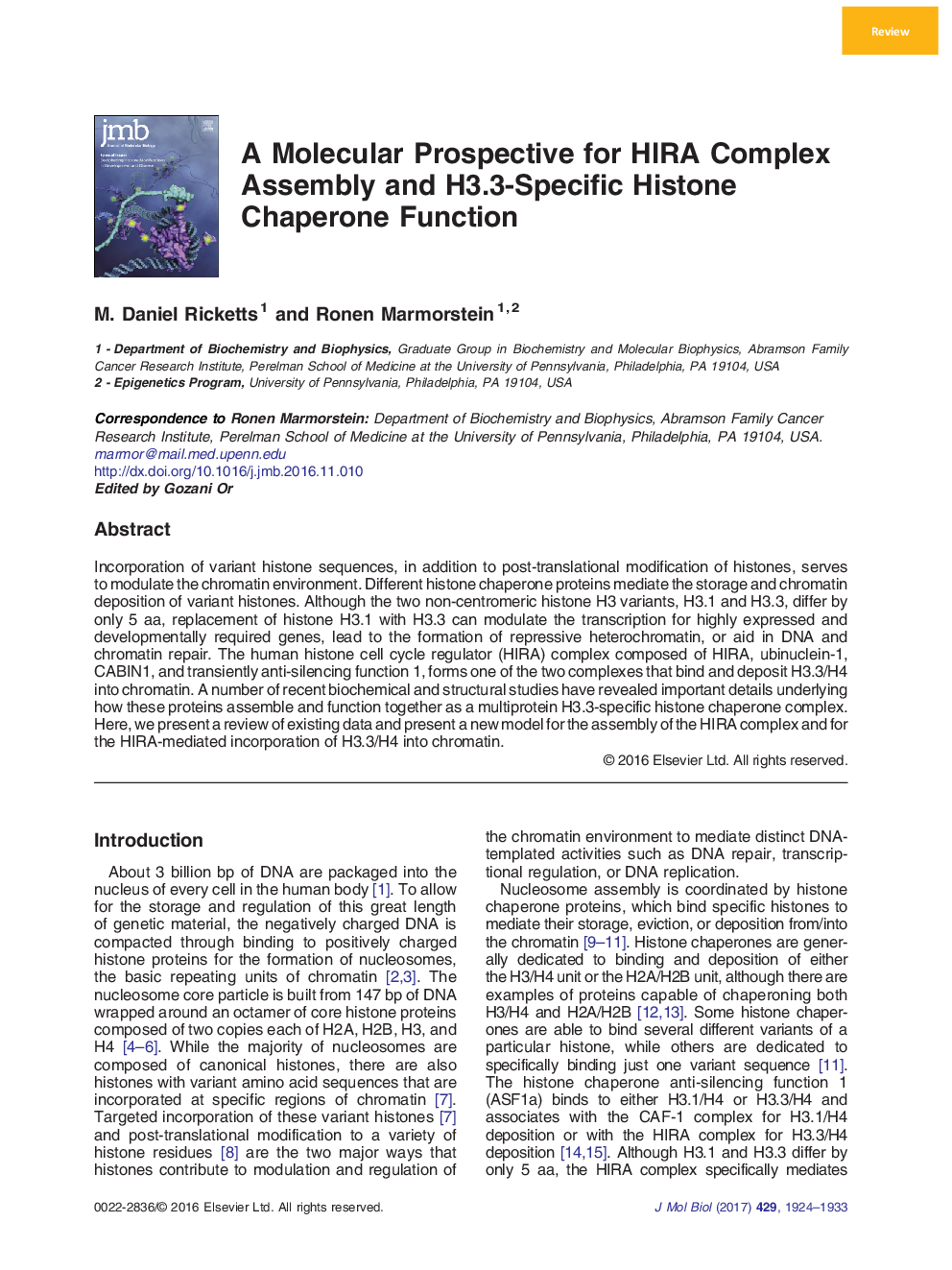| کد مقاله | کد نشریه | سال انتشار | مقاله انگلیسی | نسخه تمام متن |
|---|---|---|---|---|
| 5533068 | 1402098 | 2017 | 10 صفحه PDF | دانلود رایگان |

- Molecular basis for the assembly of the H3.3-specific HIRA histone chaperone complex
- Structural analysis of the mechanism underlying H3.3-specific binding by the HIRA complex
- Proposed model for (H3.3/H4)2 tetramer formation by the HIRA complex
Incorporation of variant histone sequences, in addition to post-translational modification of histones, serves to modulate the chromatin environment. Different histone chaperone proteins mediate the storage and chromatin deposition of variant histones. Although the two non-centromeric histone H3 variants, H3.1 and H3.3, differ by only 5 aa, replacement of histone H3.1 with H3.3 can modulate the transcription for highly expressed and developmentally required genes, lead to the formation of repressive heterochromatin, or aid in DNA and chromatin repair. The human histone cell cycle regulator (HIRA) complex composed of HIRA, ubinuclein-1, CABIN1, and transiently anti-silencing function 1, forms one of the two complexes that bind and deposit H3.3/H4 into chromatin. A number of recent biochemical and structural studies have revealed important details underlying how these proteins assemble and function together as a multiprotein H3.3-specific histone chaperone complex. Here, we present a review of existing data and present a new model for the assembly of the HIRA complex and for the HIRA-mediated incorporation of H3.3/H4 into chromatin.
Graphical Abstract116
Journal: Journal of Molecular Biology - Volume 429, Issue 13, 30 June 2017, Pages 1924-1933